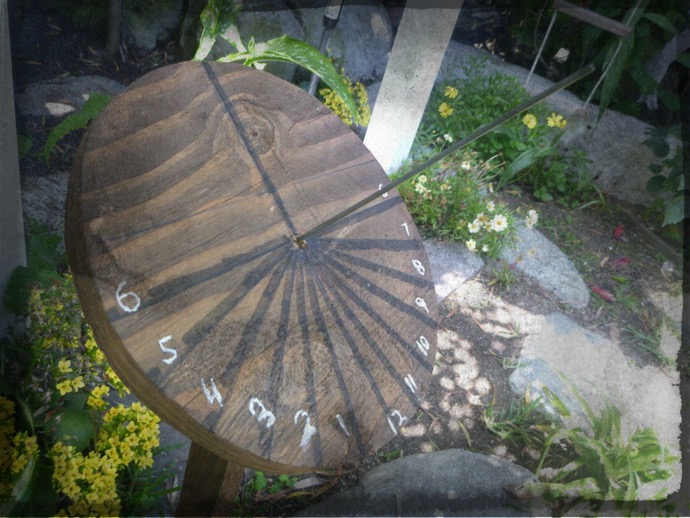A sundial is a reliable and simple tool to use to tell time no matter where you are, and they’ve been around for thousands of years. The value of the sundial can not be understated, especially during a long-term survival situation when you don’t have a functional clock or watch. Let’s take a look at a very simple project that can not only help you to tell time, but it will introduce you to the basic principles that make sundials tick. This also makes a safe, simple and fun project for kids in order to get them familiar with improvising and building up their survival skill-set.
Getting Started
Find a bare spot on the ground where you can trace some lines in the dirt or sand. Place the compass on the ground, near the center of the patch, and find north. Draw a long line in the ground with a stick along the north south axis revealed by the compass. Next, draw another line that bisects the first one in the center. This will be your east west line. Keep in mind that your location as well as magnetic variation will make true north a few degrees to the left or right of the north south line. The north line represents 12 o’clock, the south line is 6 o’clock, the east line is 3 o’clock and the west line is 9 o’clock.
All you need to do is place the triangle on the north south line and tell time. The shadow of the triangle, particularly the top edge and the point will indicate what time it is. Test this by using your watch, and you’ll be surprised at the accuracy of this method.
Practical Considerations
This trick is a good way to tell the current time, but for long-term use, it will lose accuracy as the sun will be in a different position in the sky throughout the year. One way to develop a more precise way to measure time is by making a sundial. You can create one with some scrap wood and a marker.

The first step is to take a big board and cut it into the shape of a circle. Try to make it about a foot in diameter so that it will be easy to read.

Next, you need to make a gnomon, or a fin-like piece of wood that will be placed on top of the sundial. The trick is to angle the gnomon to represent your latitude. For example, if you’re at 40 degrees north latitude, then the angle of the side of the gnomon should also be 40 degrees. This will accommodate differences in the position of the sun and give you a more accurate sense of time.
Next, you need to find true north. As mentioned earlier, there is a difference between true and magnetic north, and this variation changes slightly over time. The easiest way to figure out this difference is to place your compass in the center of the board before installing the gnomon. Pencil in a north south line that corresponds with the compass reading. Then, go online and look for magnetic variations based on your latitude. This is really easy to do, and there are a ton of websites that produce this information. This will tell you how many degrees to the left or right true north really is. Once you know this, you can trace a line that extends from the center of the sundial. This will be your baseline guide for telling time.

Next, mark the spot with the number 12 at the edge of the sundial where the true north line is located. This is 12 o’clock. Then, do the same for the 6 o’clock position. Draw another line that bisects the north south one in the center. These will be your 3 and 9 o’clock positions respectively. Once you’ve drawn your cardinal time lines, you can measure the rest of the hours by equally spacing them between each quarter. This is optional, and you can just as easily eyeball the sundial to get a sense of time as well.
All you need to do now is attach your gnomon in the center of the sundial with the angle and pointed end facing true north and secure it in place. The shadow that it casts will indicate the time based on your location. Keep in mind that you can make a gnomon out of a stick instead of a fin as well. Just remember that it needs to be angled to the degree that corresponds to your current latitude. It may be easier to use the fin as it will be more stable and less prone to moving and changing degrees, which can alter the time readings.
In any case, using both options described above gives you the ability to tell time from anywhere without the need for a clock or watch. Try it for yourself, and consider using this project as a way to get your kids involved in survival planning and preparedness while also introducing them to fundamental bushcraft skills as well.
